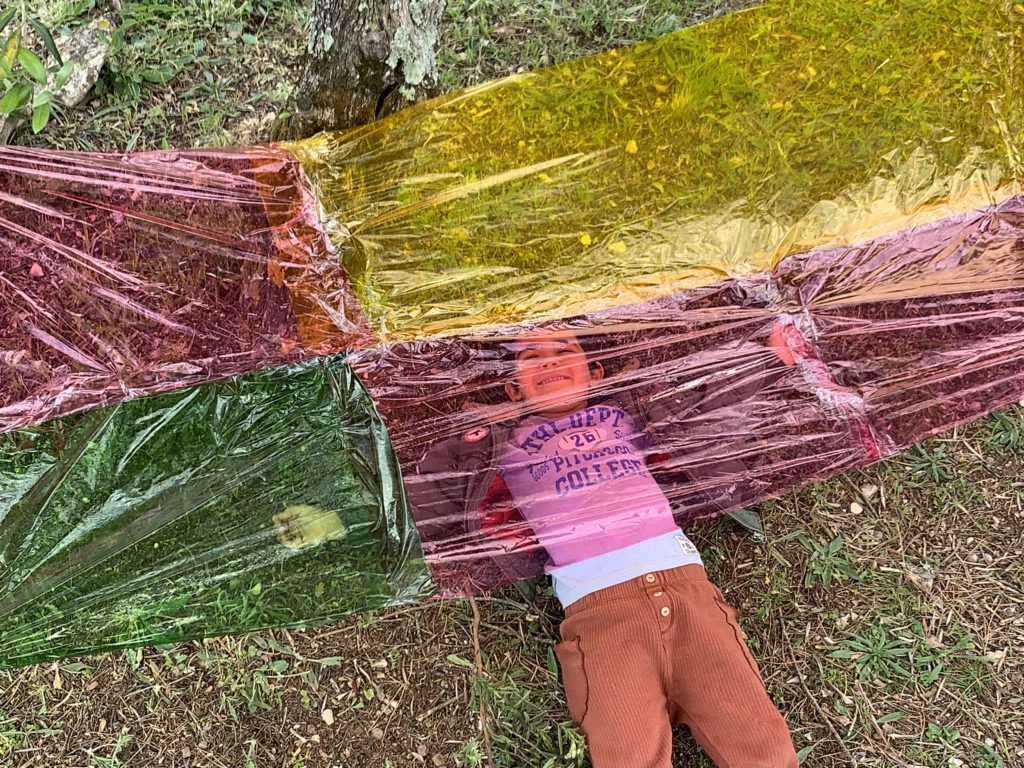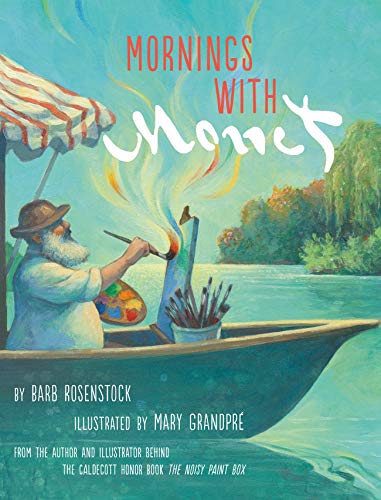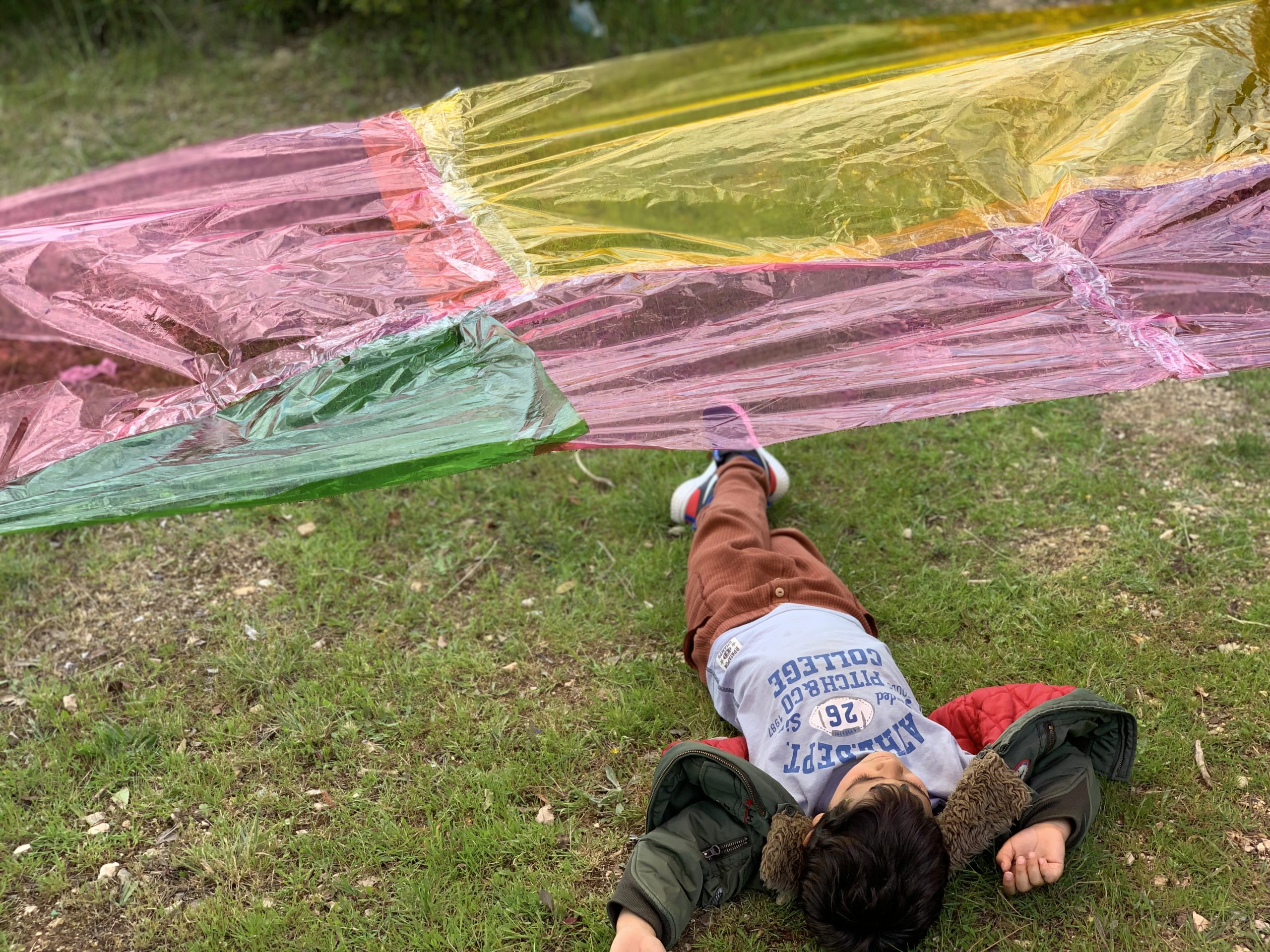The sky is blue, and the clouds are white. Except when they are a burning red and yellow or a wintry green or grey…
The color of the sky is different at different times of the day and year because of the earth’s position relative to the sun. These colors can also be seen differently by each one of us.With this Play Invitation, children can learn about other ways of representing the colors we see in nature and be inspired by one of the great masters of painting, Claude Monet. A painter who brought a new approach to the use of color in art.
Children can develop vocabulary, comparison, description skills, and imagination and interpret natural phenomena by reflecting on their observations of the sky.
What Could Lead Us to This Play Invitation
- Children have been exploring color and light;
- Children are curious about the changes they observe in nature;
- Children are excited about naming the colors they see around them.
Materials Needed
• Thread
• Colored cellophane paper
Setting up this Play Invitation
- Print or open on your computer the downloadable PDF with some of Claude Monet’s paintings from his series Houses of Parliament.
- Choose a place outside and use thread and cellophane paper to build a “colored ceiling” to observe the sky. The cellophane shouldn’t be too high, as it becomes too small to see, nor too low to allow children to sit and lay bellow.
Tip: Choose a time of the day when the sun is not too high to avoid children to look directly at it.
How to Explore
- Explore with the children the paintings and reflect on the different colors Monet choose to represent the sky.
- Dialogue about:
- Why do you think Monet painted the sky with different colors in each painting?
- Have you ever seen the sky like this?
- Invite children outside, show them the “colored ceiling” and invite them to lie below looking up to the sky.
- Observe their reactions and conversations.

Optional Next Step: Create eyeglasses using cardboard and cellophane paper. How does toe world look around you?
How to Nurture the Natural Unfolding of the Child’s Identity During This Play Invitation
- Children have the right to develop their creative potential. When we plan our activities we must consider all types of expressive languages like singing, building, acting, or storytelling to accommodate every preference we may have within our group.
- Children have the right to contact references from their culture. When we cannot take children to experience some work of art firsthand we can always offer opportunities for children to see photos, models, representations, or other resources. However the information is transferred, children will always develop their ideas, and build their own connections to make sense of their experiences.
The Academic Learning Opportunities
- SCIENCE: Hypothesising based on their observations, predicting, and exploring cycles and change.
- PHYSICAL: Build on their motor skills, working in different positions, and visual-spatial relationships.
- ART: Develop creativity and ways of seeing, build on their cultural knowledge by contacting with the works of an artist. Explore color and perspective.
Extensions
- Call children’s attention to the sky during your day at school and in the following days. Document it with pictures and/or paintings like Monet did.
Book Recommendation

A beautiful book about an artist who explored light and color as no other.

